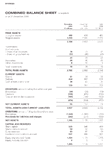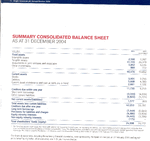is it just me or are the topics on board getting back to that old repetitous and boring phase ?
OK , I'm going to wade in now and start another round of stimulating conversation but first a favour for a favour yeah ?
I need accounting type people and people knowledgable on currency swaps.
1) currency swaps .
when I worked in a bank treasury , most so called colleugues hated to share information with each other despite the bank's new age fag " let's all get along " policy.
there was tremendous bitchiness amongst co-workers. anytime I asked about info , the stock reply was to give in such convulted terms that it took you a month just to decipher it .
such is bank culture.
so I was not a dumbsh1t as my colleugues had hoped for ,I managed to elicit info for most things I wanted one way or another .
one thing that eluded me slightly were currency swaps . now as I see it CS are forex forward contrat swapped to earn the interest ( or price gain on the swap ) on the the opposing currency , for a duration before the maturity of the forward .
so you get a double bonus on the trade:
- you make on favourable moves on your forward contract
- you also make on the price moves on your swap contract , which is also a bonus if the forward position is not an outright trade , ie) a hedge of somesort.
is this right ?
2) why do balance sheets have to balance ?
yes I know all the rest of the info can be garnered from other statements - P & L , cash flow , depreciation , contigencies etc .
but what is the use of a balance sheet that is always even , why not just have a assets page since you will know automatically that the liabilities will be the same ?
OK , I'm going to wade in now and start another round of stimulating conversation but first a favour for a favour yeah ?
I need accounting type people and people knowledgable on currency swaps.
1) currency swaps .
when I worked in a bank treasury , most so called colleugues hated to share information with each other despite the bank's new age fag " let's all get along " policy.
there was tremendous bitchiness amongst co-workers. anytime I asked about info , the stock reply was to give in such convulted terms that it took you a month just to decipher it .
such is bank culture.
so I was not a dumbsh1t as my colleugues had hoped for ,I managed to elicit info for most things I wanted one way or another .
one thing that eluded me slightly were currency swaps . now as I see it CS are forex forward contrat swapped to earn the interest ( or price gain on the swap ) on the the opposing currency , for a duration before the maturity of the forward .
so you get a double bonus on the trade:
- you make on favourable moves on your forward contract
- you also make on the price moves on your swap contract , which is also a bonus if the forward position is not an outright trade , ie) a hedge of somesort.
is this right ?
2) why do balance sheets have to balance ?
yes I know all the rest of the info can be garnered from other statements - P & L , cash flow , depreciation , contigencies etc .
but what is the use of a balance sheet that is always even , why not just have a assets page since you will know automatically that the liabilities will be the same ?


